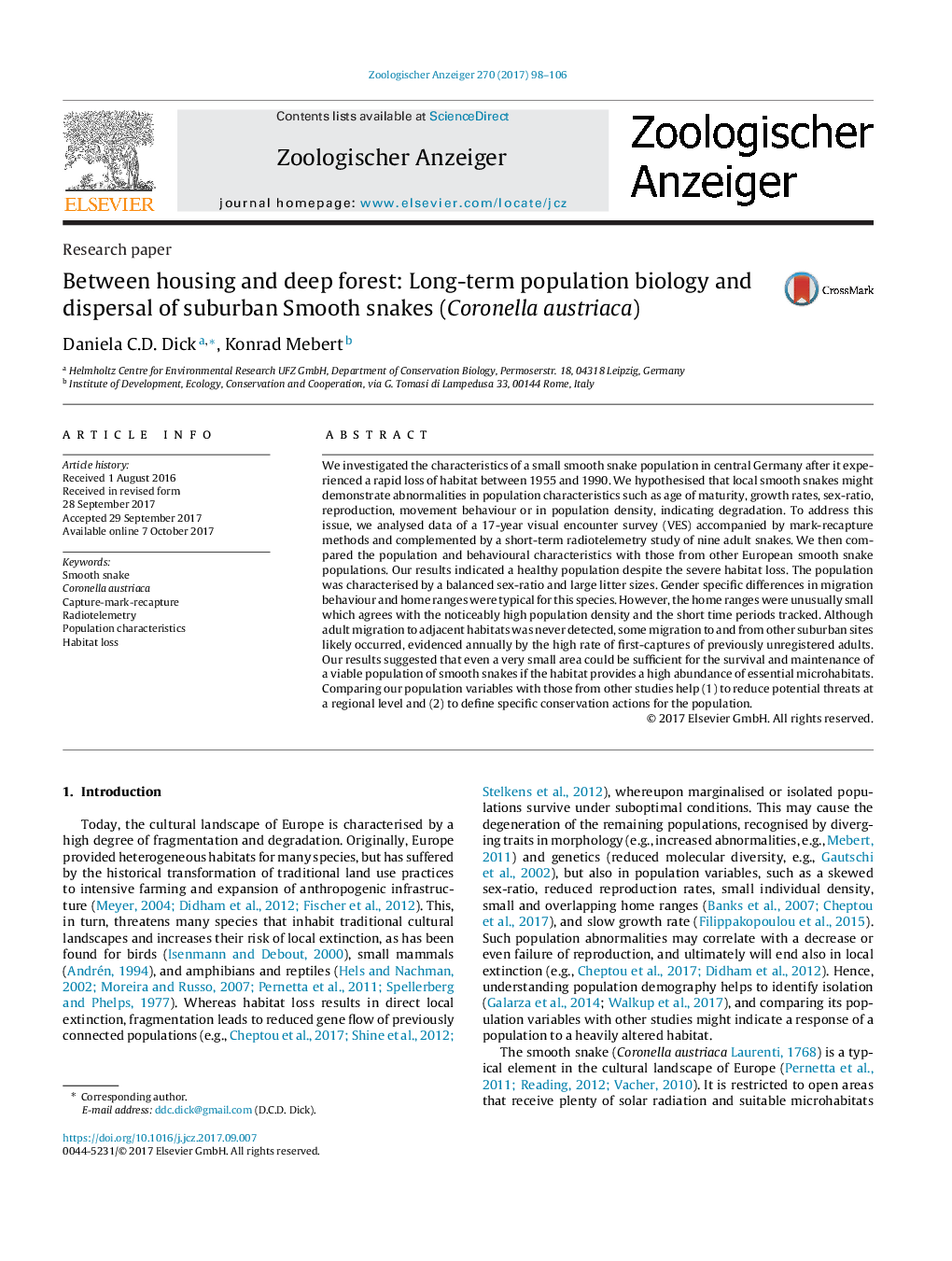| Article ID | Journal | Published Year | Pages | File Type |
|---|---|---|---|---|
| 5586404 | Zoologischer Anzeiger - A Journal of Comparative Zoology | 2017 | 9 Pages |
Abstract
We investigated the characteristics of a small smooth snake population in central Germany after it experienced a rapid loss of habitat between 1955 and 1990. We hypothesised that local smooth snakes might demonstrate abnormalities in population characteristics such as age of maturity, growth rates, sex-ratio, reproduction, movement behaviour or in population density, indicating degradation. To address this issue, we analysed data of a 17-year visual encounter survey (VES) accompanied by mark-recapture methods and complemented by a short-term radiotelemetry study of nine adult snakes. We then compared the population and behavioural characteristics with those from other European smooth snake populations. Our results indicated a healthy population despite the severe habitat loss. The population was characterised by a balanced sex-ratio and large litter sizes. Gender specific differences in migration behaviour and home ranges were typical for this species. However, the home ranges were unusually small which agrees with the noticeably high population density and the short time periods tracked. Although adult migration to adjacent habitats was never detected, some migration to and from other suburban sites likely occurred, evidenced annually by the high rate of first-captures of previously unregistered adults. Our results suggested that even a very small area could be sufficient for the survival and maintenance of a viable population of smooth snakes if the habitat provides a high abundance of essential microhabitats. Comparing our population variables with those from other studies help (1) to reduce potential threats at a regional level and (2) to define specific conservation actions for the population.
Related Topics
Life Sciences
Agricultural and Biological Sciences
Animal Science and Zoology
Authors
Daniela C.D. Dick, Konrad Mebert,
